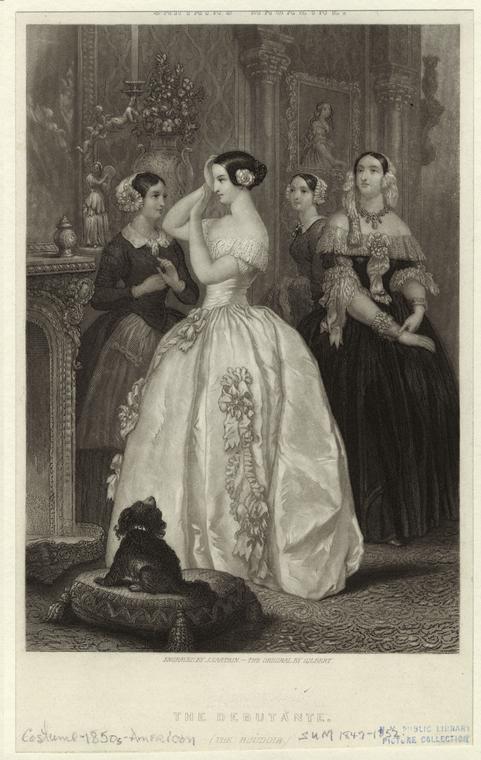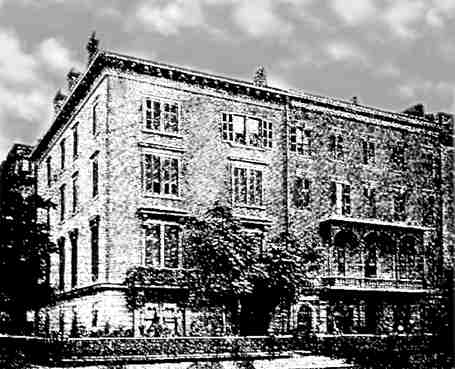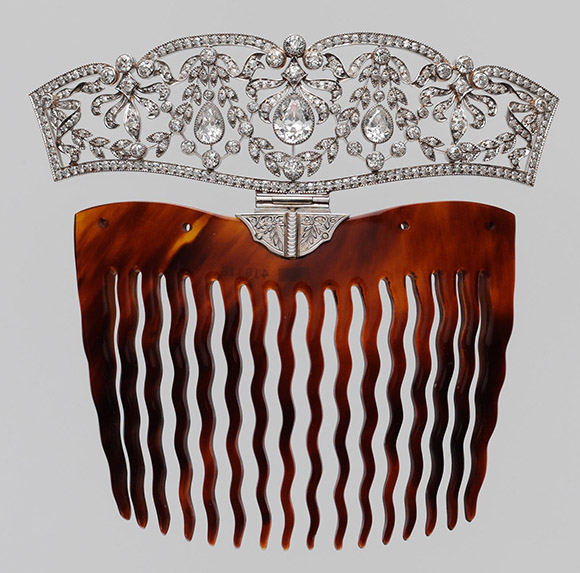The process of achieving a societal debut in the late nineteenth century was one in which eighteen-year-olds got their first taste of all the splendour that money could buy.
Yet at the same time, the coming out process was one that was as constricting as it was exhilarating. The art of coming out was demanding, an experience that was rigorous to a degree the privileged debutante had not previously experienced. The world of the “fashionables” might be exceedingly comfortable, but it was also fraught with potential dangers of social missteps, especially when it comes to expectations for adolescent girls as they approached maturity.
The culture of the a debutante first originated in Britain during the reign of Queen Elizabeth I, in the second half of the 16th century, when she began the custom of formally presenting eligible young women at court. Three centuries later, Queen Victoria created the ritual we think of today, with girls dressed in white and the official bow called a “curtsey.” It soon spread to America.
In Victorian days, young girls were kept closely guarded at home throughout their adolescence.
Their debut indicated that they were now officially allowed to come out from under their parents’ close guardianship and begin the rituals of courtship. Not only that, though, they were being ushered into a new status as ladies, on a par with some of the notable creatures of the age.
The grand dames of society banded together when a girl reached what was considered a marriagable age to help usher her into a new social status. The rituals of this transition were female-centric, self-absorbed.
There was certainly some power in the process for women, as they created and enforced the rules. But the learning curve for the debutante was steep and it was easy to make mistakes.
There was shopping for a proper wardrobe, to begin with. Godey’s magazine was the Vogue of the day; girls and women perused it to order items to suit their more grown-up status.
Not only fancy gowns, but “everyday” items.
New hats were a vital fashion component.
Dance lessons ensured that the debutante would be able to hold her own with the worthies of the day when she was “out” and socializing. Complex steps posed difficulties and required hours of practice, usually at special schools.
Late afternoon teas and luncheons in private dwellings brought the debutante together with society ladies she was meant to impress. Throughout, lessons were imparted from mothers to daughters, warnings about indecorous behavior, inappropriate dress. It was all about learning the proper way to act.
A crucial part of the process was the ritualized social visit known as calling. Everyone knew that formal calls were to take place for precisely 15 minutes between 3 and 5:00. One woman would drop her card at another’s house to let her know when she would be at home to receive visitors. The card had her name inscribed upon it, and the debutante’s name would be added to it. It wasn’t unknown to keep a visiting list of over 500 names.
Then came the ball. A grand reception that brought together a group of debutantes with young men their age and other, more mature members of high society, it took place at some point over the winter months. The coming out ball was commonly held in a public venue like Delmonico’s restaurant, the most swellegant spot of the age, located on 26th Street opposite Madison Park, which had the facilities to accomodate a large number of guests.
The fashions were extraordinary. The finest gowns came from Worth in Paris.
A French manual from the 1880s described societal expectations for women’s formal dress:
For the ladies, a light-coloured gown with a décolleté revealing the shoulders and arms, very long gloves and light pumps. They must carry in one hand a fan made from ivory or mother-of-pearl and also have their dance card. Many ladies prefer, as do I, a bodice in a shallow square-cut or heart-shape to a very décolleté gown . Sometimes the exposed neckline and tops of the arms are covered with gauze or tulle.
The hair must be put up, preferably with jewels.
The fan was indispensable element of ladies’ finery– closed, open or fluttering, it could reveal a refusal, interest or excitement.
While married women could dress themselves in brightly colored gowns, lavish hairdos and gaudy accessories, young ladies being presented to society had to dress modestly. White symbolized their purity.
One former debutante recalled the gown she wore, made of
white chiffon over white satin and with the huge puffed sleeves of the period. From the left shoulder to the right side of the waist there was a white velvet ribbon about three inches wide, ending in a knot at the shoulder. There was a bunch of white heather by the knot and some more around the skirt, about half way up. The skirt was down on the floor, was very full and had a small train, enough to have to be held up when dancing, and enough to make a modern dancer wild.
In terms of their attire, men were the backdrop to the ladies’ finery. They were to wear a black tailcoat with white tie, black trousers and polished shoes. It was both exciting and terrifying for girls to experience the male gaze in the pressure cooker of the ballroom.
It could be uncomfortable. Edith Wharton expressed the painful self consciusness she felt at her debut, remembering that for her
the evening was a long cold agony of shyness. All my brother’s friends asked me to dance, but I was too much frightened to accept, and cowered beside my mother in speechless misery, unable even to exchange a word with the friendly young men.
At the ball, ladies awaited the invitation of a gentleman to dance, but he was supposed to note her recognition before approaching her. The chaperone, usually the mother, hovered nearby. Dance cards were employed, and a man was never supposed to dance more than once with each partner.
Wharton described a typical scene at a ball.
Couples were already gliding over the floor beyond: the light of the wax candles fell on revolving tulle skirts, on girlish heads wreathed with modest blossoms, on the dashing aigrettes and ornaments of the young married women’s coiffures, and on the glitter of highly glazed shirt-fronts and fresh glace gloves.
The cotillion, or german, was a regular feature, and involved a kind of parade of set figures, gestures and steps, all well rehearsed in advanced. Dancing would take place until midnight, when a supper would be served, then the cotillion would resume.
The debutante’s symbolic responsibilities crescendoed at the ball. She stood to the side of her mother as guests entered so that she could be presented to her elders. Here she was, finally, the product of her culture’s teachings. She stood at the precipice of a new role, one that was the inherent goal of the coming out process: to marry brilliantly and embark upon a lovely family.
She was moving from the societal constrictions of her father’s house to her husband’s house, with a brief, glorious moment in between as a model debutante.





















❤ Great information and visuals! Thank you!
LOVE IT
wow i am dojign a rewpjr nair rjer